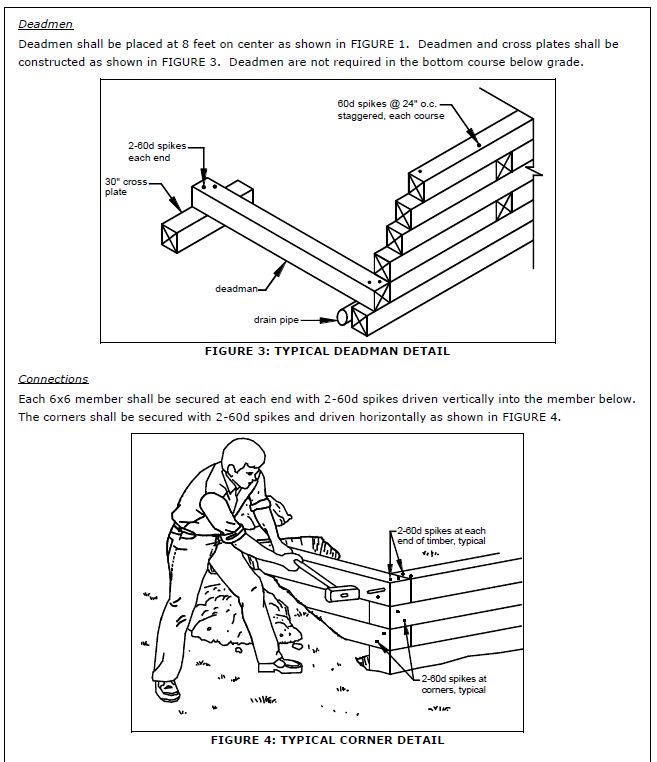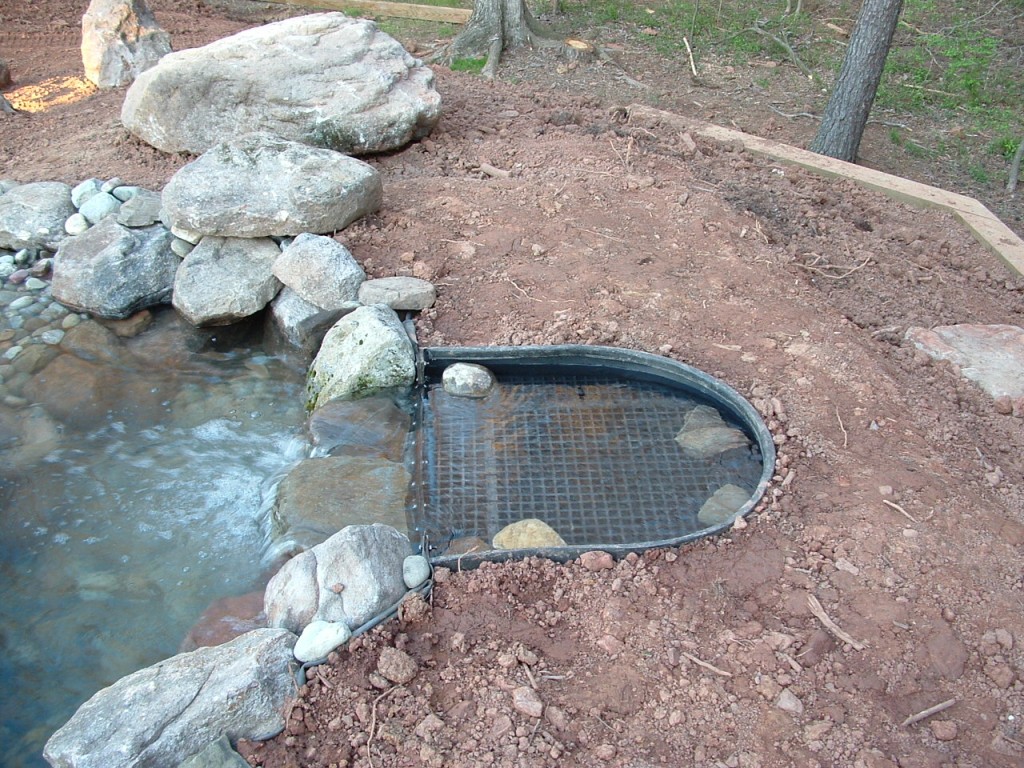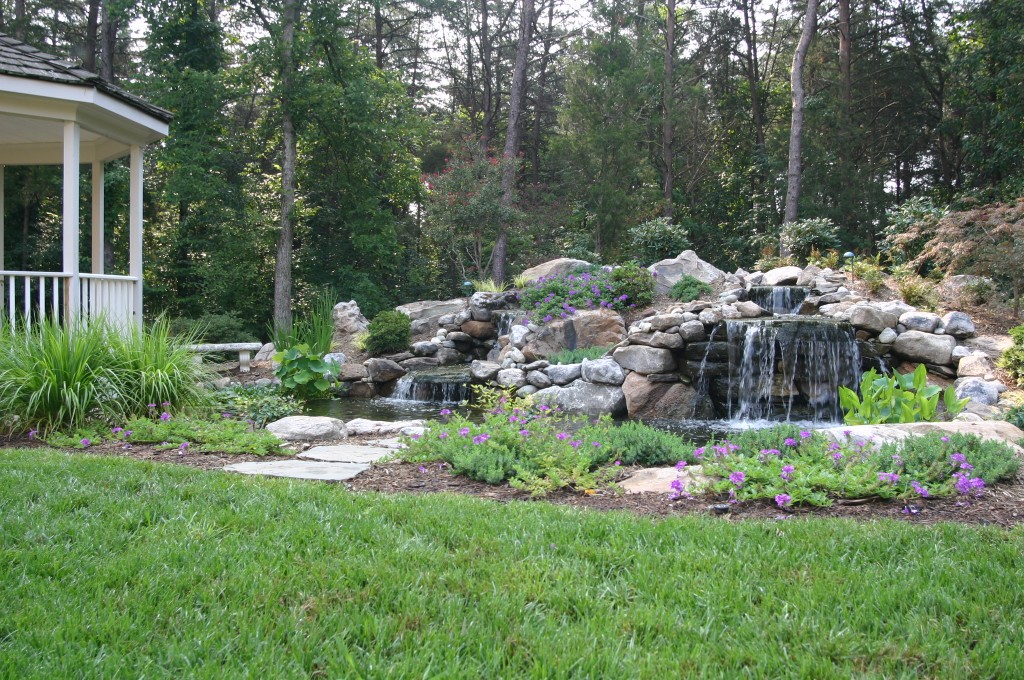I like to play a game I call underrated/overrated. You can play it with bands, actors, foods, anything you want. Example: underrated/overrated = Hudson Hawk is a brilliant and underrated movie/ Sideways is an incredibly overrated movie that makes me want to guzzle Merlot out of spite. See how it’s done? Please leave your own under/over thoughts in the comments.
A part of the landscape that I think is underrated is the timber retaining wall. There are two objections that I see raised about them: aesthetically they aren’t great, and wood will eventually break down and the wall will fail. Both very valid points. However.
Pressure-treated timbers are typically what you use for a timber retaining wall. The fun fact about pressure treated wood is that it is warrantied – but putting it in continuous contact with the ground voids the warranty. Even so, you can reasonably expect to get anywhere from 10-20 years out of a timber wall. We did a job a couple of years ago where we removed a timber retaining wall so we could install a new Techo-Bloc wall. The existing wood wall was fifteen years old and we expected it to come apart like a castle made of wet Kleenex. Instead it took days of work with demo saws and pry bars. Fifteen years later and the wall was still solid. I was impressed.

How do you get a wood wall to last so long? It all comes down to proper installation. I refer everyone to the Fairfax County Retaining Wall Detail packet, because it applies to most cases. You want a solid, compacted gravel footer; you want to make sure that every timber is level and true as it’s installed; you want to use 1/2″ galvanized spikes to hold the wall together; you want to use deadmen as shown to tie the wall into the grade behind it; and you want to backfill appropriately, including clean drainage stone, to keep water from causing the wall to fail. It may not be easy to execute (it’s still a lot of work and it takes skill to do well) but the principles are sound.
“But Dave,” you may say, “that doesn’t address the fact that a timber wall looks like a stack of lumber in my backyard.” Well, fair point my imaginary naysayer. This is why I don’t recommend a timber wall in every situation. If the wall is going to be front and center as someone drives into your property, it’s probably not the ideal choice. If you just need a functional wall and you won’t often see it, though, a timber wall could be a great way to make room in the budget for something else. In this scenario, we had to build the grade up almost six feet to create a waterfall. Rather than spend thousands of dollars to retain the soil at the back of the falls with a gorgeous stone wall that only the deer and squirrels would see, we used a timber wall.
Worried about the aesthetics? This is what it looks like from the house. Yep, you don’t see it.
There you have it: the humble timber retaining wall. It may not be glamorous and it may not be a forever solution, but if you need to stretch the budget and can conceal the wall, I hope you’ll at least consider it.
Are you making a major change to your landscape and looking for ways to stretch your budget and still make it look great? I can help with that! Contact me to set up a consultation. I’d love to help you fall in love with your property all over again.



A few years ago we took out an old timber wall for a block wall replacement, similar to what you described above. The timbers were creosote-treated RR ties. Environmentally friendly? Of course not, those things were nasty … But the wall was 20+ years old and the core of each piece was a solid as the day the wall went up.
Good post.
Yeah, the creosote RR ties are a whole other animal. I won’t use those on a bet. I’ve looked for research on the pressure treated ties and can’t find anything negative as far as leaching, so good to go!
Yeah, ever since they tweaked the PT formula 10 years back or so, they’re good to go, at least from what I’ve read as well.
I bit the bullet on those creosote ties. Unbeknownst to me at the time, none of the dumps would take them. I spent two days driving around and calling to find out how to get rid of them, even called the RR co’s thinking they might know. Nope. I finally paid a fortune to some hazmat co to take them. Live and learn on that one …
That’s miserable. I’ve known guys who have ended up in that situation and have just made a big pile of RR ties in the corner of their yard, figuring they’ll deal with them someday. Can’t imagine environmental disposal costs are going to get any cheaper.
I’ve done some pretty exhaustive searches and can’t find anything saying ACQ leaches. My brother refuses to use p/t lumber near ponds because he swears enough copper leaches via rainwater to create toxic levels and fish kill in backyard ponds, but I don’t know if that’s evidence-based or just apocryphal.
https://www.ncbi.nlm.nih.gov/m/pubmed/24718339/
It leaches a lot. Never plant fruit trees or vegetables next to a pressure treated fence. I discovered the problem much by accident as we had a massive raspberry patch next to a PT fence. Within minutes of Eating the raspberries felt instantly sick.
I did actually see that study a while ago. Are you sure it was the pt lumber though? That would not only require significant leaching of copper but also some serious uptake by the plant, *and* concentration in the fruits.
Dave, I’ve always thought about building a timber wall, and now I know if it will last or not. I am thankful to you for sharing some excellent information regarding landscaping here. Cheers!!
Is there a way to repair a failing wall where the bottom courses are rotted out without digging the entire thing up and starting over?